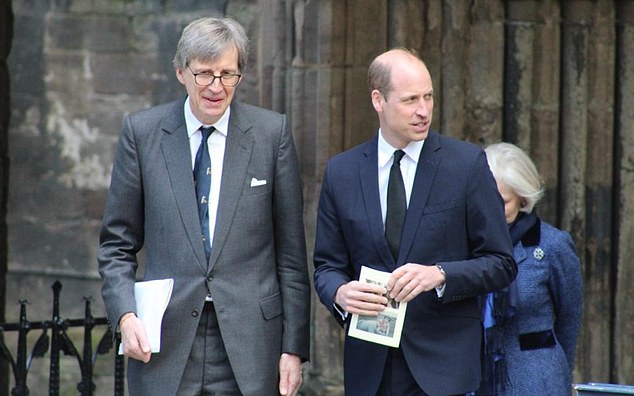The Prince of Wales today attended a private memorial service for the last surviving member of the original wartime SAS.
Major Mike Sadler, whose death at age 103 was announced in January, was recruited by David Stirling, who founded the British Army’s elite Special Air Service regiment in 1941.
He initially participated in night raids against Axis airfields in Libya before parachuting into Nazi-occupied France after the D-Day Normandy landings in 1944.
Major Sadler was awarded the Military Cross for his actions in France, later serving in MI6 and even naming a part of Antarctica after him.
In 2018, he was further recognized with France’s highest honor: the Legion of Honor.
Prince William was among guests at Major Sadler’s memorial service at Hereford Cathedral today.
It comes a day after he made his first public appearance since the Princess of Wales’ cancer announcement last month.
The Prince of Wales, 41, helped carry food and cook in the kitchen of food distribution charity Surplus to Supper in Sunbury-on-Thames, Surrey.
The Prince of Wales today attended a private memorial service for the last surviving member of the original wartime SAS.
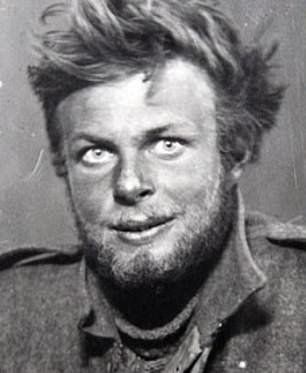
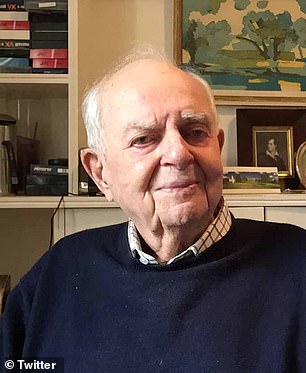
Major Mike Sadler was recruited by David Stirling, the founder of the British Army’s elite Special Air Service regiment, which was formed in 1941.
Major Sadler left school in 1937 to work on a farm in Southern Rhodesia, what is now Zimbabwe.
After war broke out in 1939, Major Sadler joined the artillery unit of the Rhodesian Army.
In 1941 he had been commissioned as a sergeant, but ended up being demoted when he refused a commanding officer’s order that his men wear boots instead of sand shoes when they slept.
He then met a member of the Long Range Desert Group, a reconnaissance unit based in the North African desert.
The soldier convinced him to join and he quickly took on the role of navigator. He was soon in charge of navigation for both the LRDG and the SAS.
In December 1941, Major Sadler was part of the first successful SAS attack, on Wadi Tamet airfield, where a six-man team destroyed 24 aircraft and a fuel depot.
This was led by Lieutenant Blair ‘Paddy’ Mayne, a former Irish international rugby star who would become one of Britain’s most decorated soldiers.
Major Sadler fought with the SAS in Italy and France after his time in the Desert War, before establishing the SAS intelligence unit.
On August 7, 1944, Major Sadler was parachuted into the Loire as part of Operation Houndsworth.
The objective was to reach the SAS squadrons behind the lines and help destroy fuel depots, encourage local resistance and prevent Panzer divisions from heading north.
By then, Hitler had given instructions that the captured paratroopers be executed.
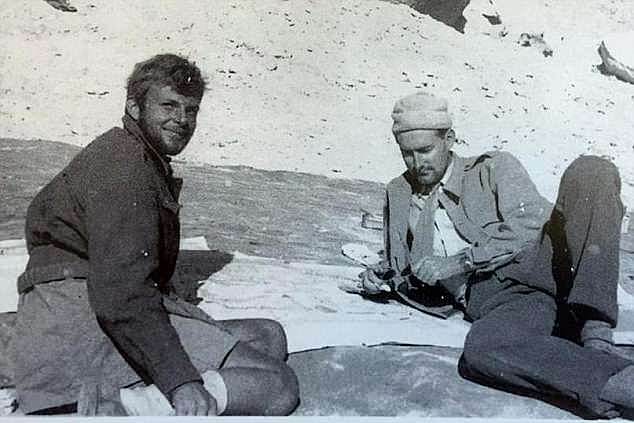
Major Sadler (left) initially participated in night raids against Axis airfields in Libya before being parachuted into Nazi-occupied France after the D-Day Normandy landings in 1944.
The Germans attacked the convoy of two jeeps and Major Sadler returned fire, allowing the other jeep to flee before escaping himself. Later he received the Military Cross for his bravery.
Those who formed L Detachment SAS called themselves “the Originals”, with Major Sadler considered honorary.
Stirling assigned him the role of lieutenant, but this was reportedly never told to the authorities, so Major Sadler ended the war as a major.
On the night of July 26, 1942, Major Sadler, without headlights or a map, guided 18 jeeps filled with twin Vickers K machine guns across 70 miles of desert to within 200 feet of the Sidi Haneish airfield.
The group then opened fire as they drove between planes, destroying at least 37 planes. But one of the SAS jeep drivers was shot in the head during the attack and buried in the sand.
“I remember the people who did not survive and who did not have the opportunity to receive this great honor,” Major Sadler said after receiving the Legion of Honor.
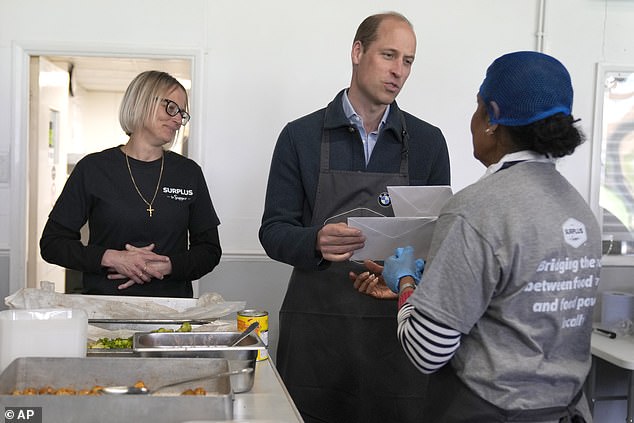
It comes a day after he made his first public appearance since the Princess of Wales’ cancer announcement last month. The Prince of Wales, 41, helped carry food and cook in the kitchen of food distribution charity Surplus to Supper in Sunbury-on-Thames, Surrey.
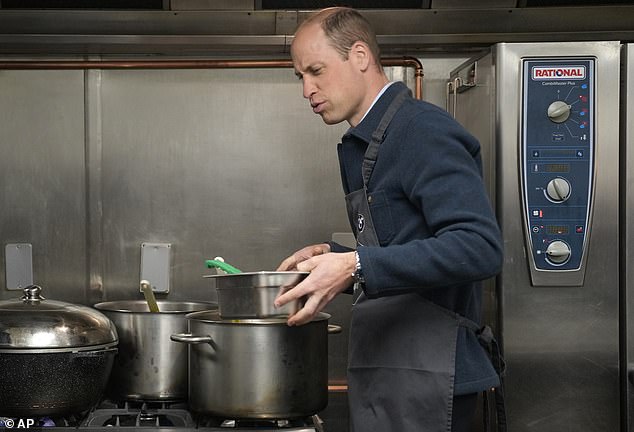
Prince William prepares bolognese sauce at Surplus to Supper in Sunbury-on-Thames today
He was awarded the Military Medal for the attacks on Tamit and Sidi Haneish.
Major Sadler was also one of the officers who followed Stirling on the last SAS operation during the Desert War in January 1943.
This involved attempting to cross the Tunisian desert to meet the British-American 1st Army, but they were ambushed by a German unit.
Stirling was captured and would spend the rest of World War II as a prisoner of war at Colditz.
Major Sadler managed to escape along with another SAS soldier and an Arabic-speaking Frenchman.
He led the group on a five-day, 100-mile trek, without a map or food supplies, to link up with the 1st Army.
American war correspondent AJ Liebling saw Mr Sadler arriving from the desert and wrote: ‘This fellow’s eyes were round and sky blue and his hair and mustaches were very light.
“His beard started just below his chin, giving him the air of a haggard and slightly mad Paul Verlaine.”
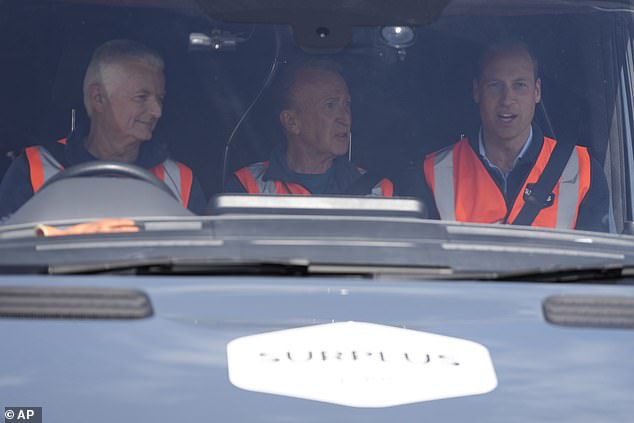
William sits in a delivery van during a visit to Surplus to Supper in Sunbury-on-Thames today
When the SAS was disbanded at the end of the war, Major Sadler left the army and joined the Antarctic survey of the Falkland Islands dependency.
For his efforts he received the Polar Medal.
The soldier then spent two years working at the American embassy in London before being recruited by MI6. He said little about his time in the Secret Intelligence Service, other than the fact that it allowed him to indulge his love of sailing.
He retired in 1984 and spent his final years in a retirement home near Cambridge.
After the war, Major Sadler married Anne Hetherington, but the union dissolved after two years.
In 1958 he married Pat Benson, who died in 2001. He is survived by his daughter Sally.
Major Sadler was played by Tom Glynn-Carney in the hit BBC series SAS: Rogue Heroes, which aired in 2022.


